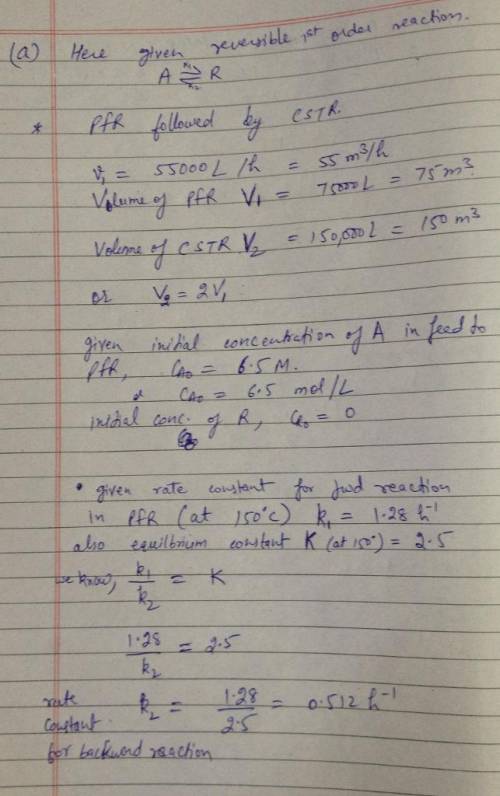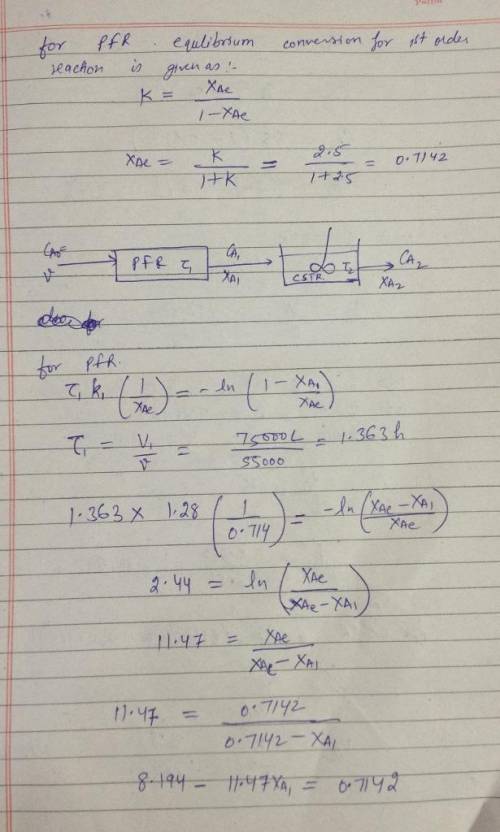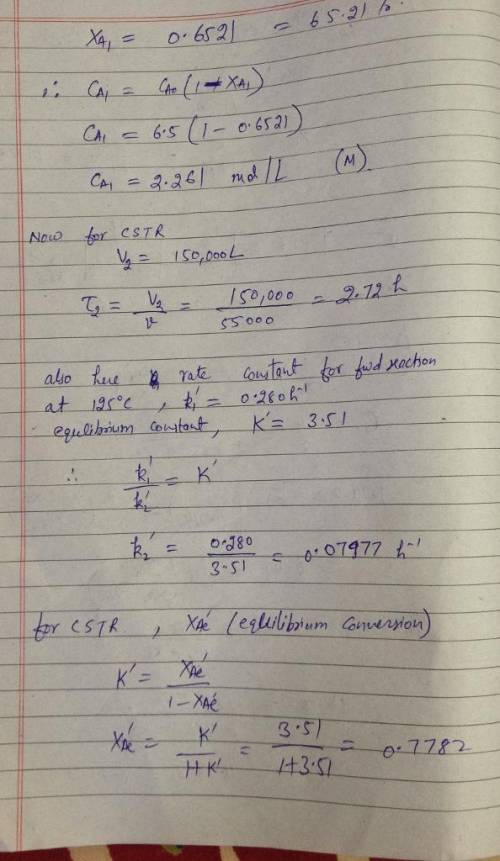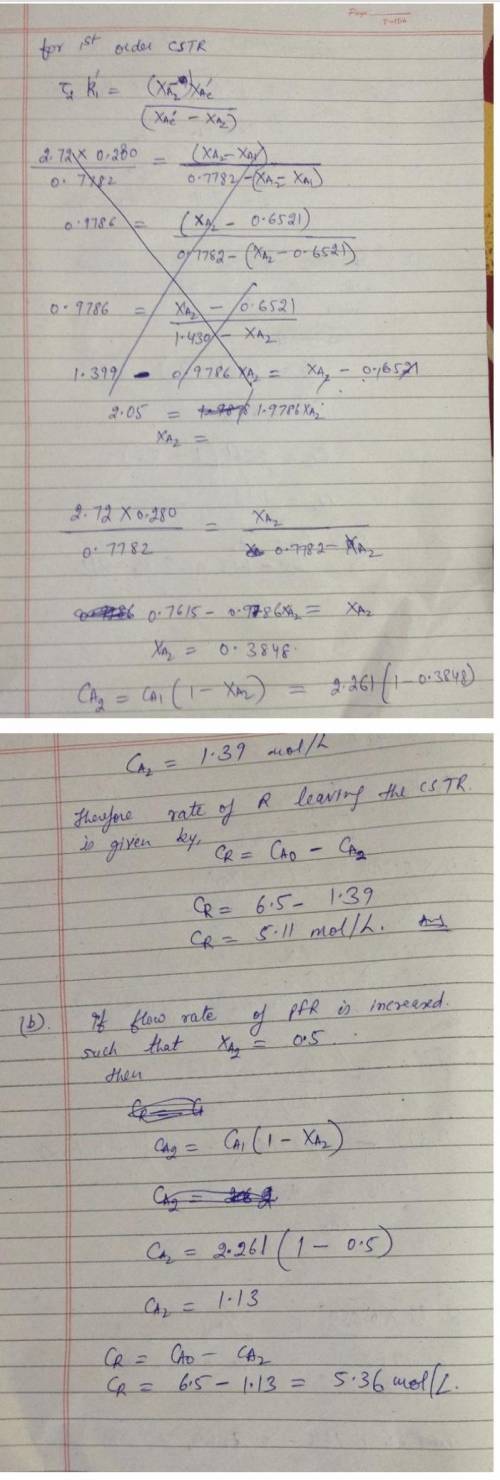
Engineering, 21.02.2020 06:23 jdto8
The homogeneous, reversible, exothermic, liquid phase reaction: A근R Is being carried out in a reactor system consisting of an ideal PFR followed by an ideal CSTR. The volume of the PFR is 75,000 L, and the volume of the CSTR is 150,000 L. The PFR operates at 150 °C, and the CSTR operates at 125 °C. The volumetric flow rate entering the PFR is 55,000 L/h, the concentration of A in this stream is 6.5 M, and the concentration of R is zero. The reaction is first order in both directions. The rate constant of the forward reaction at 150 °C is 1.28 h and the equilibrium constant based on concertation at 150 °C is 2.5. The rate constant at 125 °C is 0.280 h and the equilibrium constant is 3.51. (a) What is the rate of R leaving the CSTR (mol/h)? (b) The flowrate to the PFR is increased so that the fractional conversion of A is 0.5 in the efluent from the CSTR. All other parameters remain unchanged. What is the new production rate of R?

Answers: 1
Another question on Engineering

Engineering, 04.07.2019 18:10
What difference(s) did you notice using a pneumatic circuit over hydraulic circuit.explain why the pneumatic piston stumbles when it hits an obstacle.
Answers: 2

Engineering, 04.07.2019 18:10
The higher the astm grain-size number, the coarser the grain is. a)-true b)-false
Answers: 3

Engineering, 04.07.2019 18:10
Consider a large isothermal enclosure that is maintained at a uniform temperature of 2000 k. calculate the emissive power of the radiation that emerges from a small aperture on the enclosure surface. what is the wavelength ? , below which 10% of the emission is concentrated? what is the wavelength ? 2 above which 10% of the emission is concentrated? determine the wavelength at which maximum spectral emissive power occurs. what is the irradiation incident on a small object placed inside the enclosure?
Answers: 2

Engineering, 04.07.2019 18:20
Asolid cylinder is concentric with a straight pipe. the cylinder is 0.5 m long and has an outside diameter of 8 cm. the pipe has an inside diameter of 8.5 cm. the annulus between the cylinder ad the pipe contains stationary oil. the oil has a specific gravity of 0.92 and a kinematic viscosity of 5.57 x 10-4 m2/s. most nearly, what is the force needed to move the cylinder along the pipe at a constant velocity of 1 m/s?
Answers: 3
You know the right answer?
The homogeneous, reversible, exothermic, liquid phase reaction: A근R Is being carried out in a reacto...
Questions

Arts, 23.07.2019 10:30





History, 23.07.2019 10:30

History, 23.07.2019 10:30


History, 23.07.2019 10:30

French, 23.07.2019 10:30


History, 23.07.2019 10:30



Social Studies, 23.07.2019 10:30


Mathematics, 23.07.2019 10:30


Social Studies, 23.07.2019 10:30







